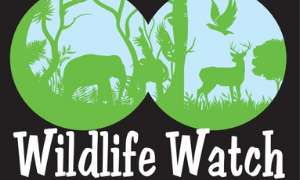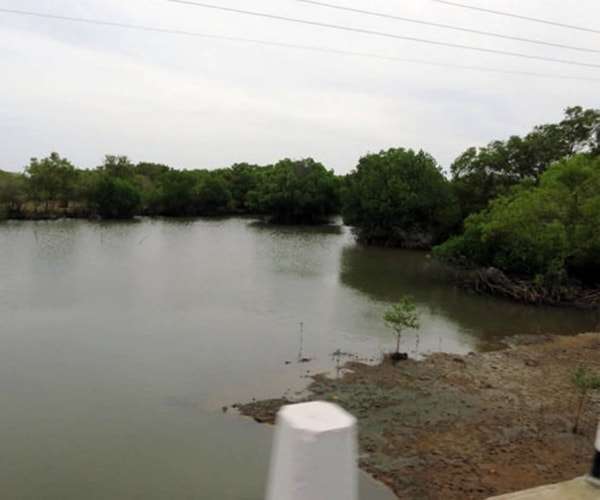
Mar 16 2021.
views 305Sri Lanka’s forests are being shaved for developmental purposes. While incidents of land clearances, tree felling and burning of timber are escalating exponentially, many wild animals such as peacocks, porcupines and wild boars are increasingly seen as pests. Environmental groups have raised concerns over certain shortsighted decisions taken by the government to allegedly favour its voters in rural areas. This week’s Wildlife Watch sheds light on a few of these issues.

CEA probes on land clearance in Kalawana
The Central Environment Authority has issued a directive to probe into the illegal clearance of land near the Kalawana- Delgoda conservation forest. As such two private lands spanning five and 17 acres respectively have been cleared. The CEA observes that while around 30-40 large trees have been felled and burned at the five-acre land, trees located adjacent to a small reservoir have been felled and burned at the 17-acre land. While issuing a notice to the two private owners, the CEA has also stated that they would take the necessary action as per the provisions included in Section 2 of the Land Acquisition Act No. 9 of 1950.
The aggravating human-elephant conflict
With the revoking of circulars that protected Other State Forests (OSFs), wild animals are fast losing their habitats. “Back in 2001, the fundamental reason for the government to transfer OSFs that were under the jurisdiction of government agents to the forest department was because the government felt that these forests need protection,” opined conservationist and former Director-General of Department of Wildlife Conservation, Dr Sumith Pilapitiya. He made these comments at a discussion organised by the Federation of Environmental Organizations.
“Government agents and divisional secretaries are developmental agencies. Their argument is that these lands are being given for development. I agree that development is needed but for it to be sustainable in the long term, the country needs what you call ecosystem services. These come from forest ecosystems. If you start depleting ecosystems, ecosystem services start reducing. Then you will not have the raw material to do Development. When fragmenting patches, there would be a huge impact on connectivity. The more biodiverse an ecosystem, the greater the ecosystem service provision. Biodiversity conservation in a country should be a development objective. We can’t develop if we don’t conserve biodiversity to provide ecosystem services.”
He further said that what the government is doing is short term. “Sometimes they are looking at wildlife protected areas for tourism revenue. All large reservoirs are under DWC. By protecting watersheds you’re providing water. Without water, you can’t have hydropower, irrigation and subsequently, development. The contribution of the wildlife sector to the development of Sri Lanka is protecting watersheds and protecting ecosystem services these ecosystems provide. However, there’s zero value placed on ecosystem services.”
“For the past 70 years we have been trying to solve the human-elephant conflict in Sri Lanka and we have failed. That’s why the conflict is aggravating every year. This conflict is occurring as a result of the increase in interactions between humans and elephants, not because the elephant population is increasing. For 70 years we have been trying to declare a protected area and put elephants in that.”

Referring to a study done by Dr Prithiviraj Fernando and the Centre for Conservation and Research to assess the distribution of elephants in Sri Lanka Dr Pilapitiya said that there are elephants and no people in wildlife protected areas. In developed areas, there are no elephants and people and there’s no conflict. But there’s 44% of the landmass outside the protected area network is being shared by humans and elephants. Even this government is trying to drive these elephants back into the forests. Driving elephants into protected areas and fencing them will provoke them to come out again. A fence is put up to protect people and property. So shouldn’t you be putting a fence around what you need to protect instead? So what we suggest is to fence villages, agricultural lands rather than fencing forests. There are fragmented forest patches these elephants have to walk through. The solutions up to now have not considered elephant biology, elephant ranging patterns and elephant behaviour. The HEC occurs as a result of development. So the conflict too needs to be mitigated as part of the development.”
EIAs as a hurdle
Speaking at the discussion, Professor of Zoology at the Colombo University Devaka Weerakoon said that Environmental Impact Assessments (EIA) are now seen as hurdles rather than a process for sustainability. “A Wildlife Management Plan (WMP) is now being looked at by developers as a hurdle. They don’t believe that the WMP is necessary to ensure that the irrigation investment is sustainable. Educated engineers in the country running these development projects are responsible. Big projects get approved based on the various plans they propose.
People who are doing major projects should understand that these plans are necessary. The irrigation engineer looks at providing water to the paddy field. But what about farmers who also need water? When you do a development project, resettlement comes first. But this didn’t happen during the Yan-Oya project for example. They agreed on a resettlement location but people didn’t want to go there. So the developers had to clear an additional 2000 hectares to resettle people. In total 4000 hectares were cleared. In the end, there’s a reservoir that doesn’t benefit anybody.”
Circular tabled for the issuance of firearms
Minister Mahindananda Aluthgamage recently appointed an expert committee to look into the issuance of firearms for farmers who own 1 acre of land. Several environmental groups raised concerns in this regard. “When deforestation takes place these animals such as monkeys, giant squirrels, wild boars, peacocks come to the forefront,” opined environmentalist Nayanaka Ranwella. “Monkeys for instance contribute to the distribution of seeds in various plant species in the buffer zone. They have instincts of habitat loss. These seeds will then form a new canopy later on. What animals like wild boars do is loosen the soil for these seeds to grow in the required conditions. Their faeces too have an abundance of nutrients. When these animals are losing their habitats and have come forward to protect their forests, the government is planning to cull and kill them. There will be various social issues that would arise as a result of issuing firearms. Hunting and poaching practices too will be on the rise. When harvest goes down what needs to be done is to utilise new technology for agricultural purposes not to kill wildlife that come to raid crops.”

“Sri Lanka is a country that is relatively small. For the first time in its history, it’s facing a situation where environmental destruction is taking place in many areas,” observed Rukshan Jayawardena, Director at the Environmental Foundation Limited. “We are clearing hundreds and thousands of hectares in large blocks, when forest lands are cleared animals are displaced. Apart from animals being displaced they either have to die or withdraw into remaining forests, which are sanctuaries, national parks or forests. All those protected areas have their carrying capacity for wildlife. So these wild animals have become a spillover. Now their homes are being converted or have already become farmlands and now there’s a food shortage. So these farmers are going to face more wildlife problems than farmers who have been cultivating traditional fields. These farmers who receive firearms maybe people who haven’t cultivated lands before. We, therefore, appeal to the President to not allow this issuance of firearms as it would cause a lot of bloodshed and subsequently a lot of animals will die.”
0 Comments